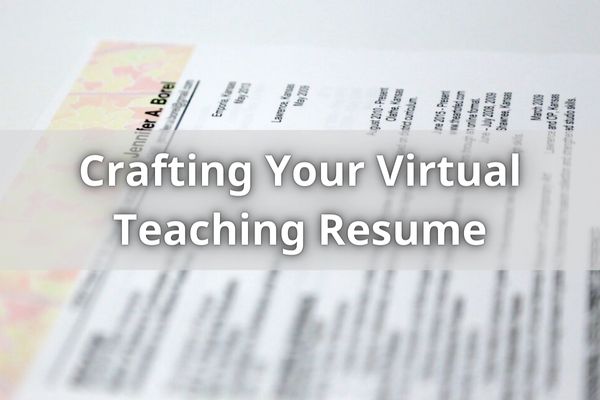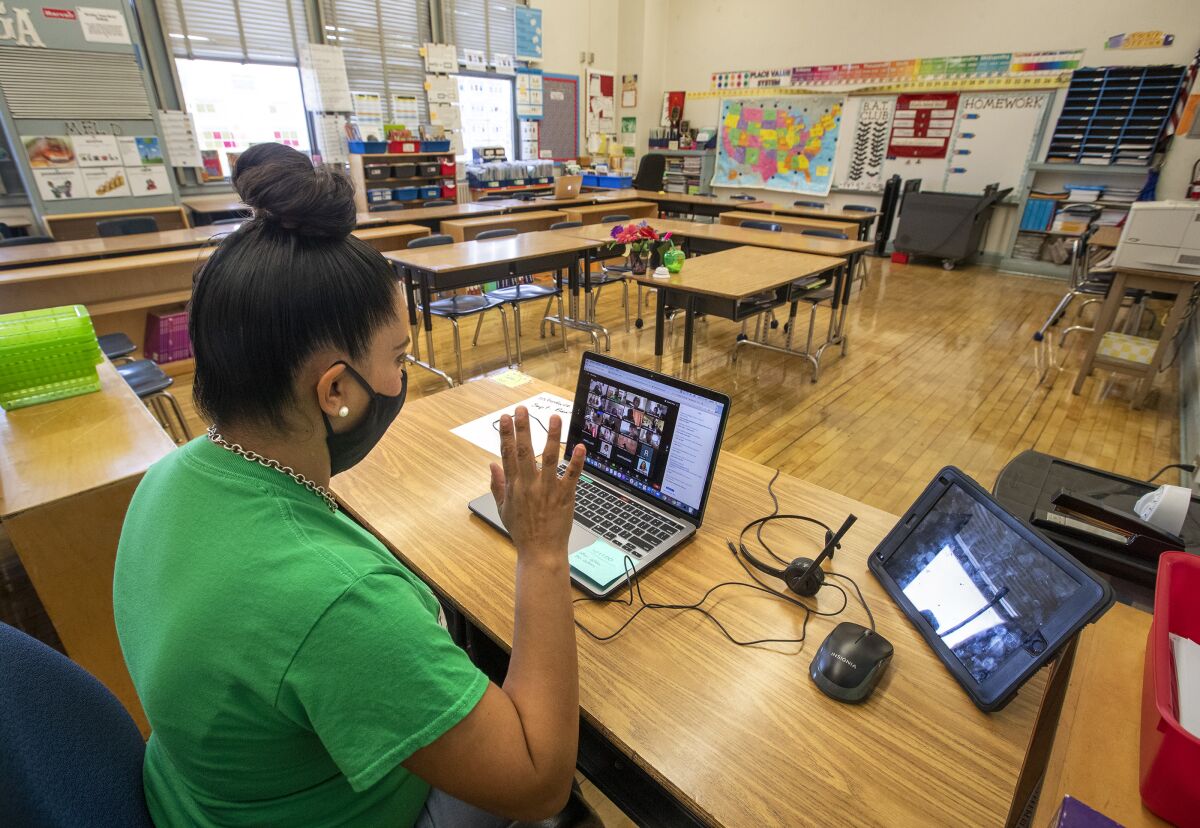Virtual Elementary Teaching Jobs: Discovering The Best Jobs.
The world of education is rapidly evolving, and virtual elementary teaching jobs are becoming more popular. As technology becomes increasingly integrated into the classroom experience, teachers must adjust to the new reality of teaching their students remotely.
Virtual elementary teaching offers a unique opportunity for educators to reach students in different parts of the country or even around the world. It also provides an innovative way for teachers to engage with younger learners through online activities and lessons tailored specifically to their needs.
In this article, we’ll explore what it takes to be successful as a virtual elementary teacher and how these positions can benefit both instructors and students alike.
Benefits Of Virtual Elementary Teaching Jobs
Virtual elementary teaching jobs allow educators to instruct their students through remote learning. This means that online communication is the primary form of interaction with pupils. It also provides opportunities for virtual collaboration between teachers, parents and administrators.
Teachers can maintain a connection with their class while still giving them individual attention on an as-needed basis. The flexibility of these roles enables instructors to better manage their time and focus on being creative in designing lesson plans and activities tailored to each student’s needs.
Furthermore, this type of job allows individuals from all over the world to teach without having to relocate or compromise other responsibilities they may have outside of work. In terms of convenience, virtual elementary teaching positions offer many advantages compared to traditional classroom instruction settings.
With the right technology tools and platforms available, it’s easy for teachers to provide engaging lessons and assignments from anywhere in the world – making it easier than ever before for teachers to make a lasting impact on their students’ lives. Despite these clear benefits however, there are also some potential drawbacks associated with such jobs which need to be considered when deciding whether or not it’s right for you.
Disadvantages Of Virtual Elementary Teaching Jobs
The virtual learning environment presents many unique challenges for elementary teachers. Despite having the potential to be incredibly effective, there are several disadvantages that should be considered before taking on a job teaching virtually.
Communication gaps and technological issues can cause frustrations when attempting to engage with students over digital platforms, while time management may also become an issue as it is easy to lose track of how much work has been done or needs to be completed.
In addition, without regular contact in person, educators must find creative ways to build relationships with their students even through technology. This requires extra effort and creativity in order to ensure each student feels connected and engaged within the classroom setting.
Furthermore, since most lessons are conducted online, teacher-student interactions usually take place via chat forums or video conferencing programs which can affect the flow of class dynamics and lesson planning significantly.
Despite these drawbacks, new tools have made it easier to bridge communication gaps between teachers and students by providing more opportunities for collaboration and engagement in the virtual space. With proper organization skills and thoughtful preparation, educators can create meaningful connections with their students even from afar.
As such, transitioning into this type of teaching environment does not necessarily mean sacrificing quality education despite its challenges. To maximize success in this field, qualification and experience needed will need careful consideration next.
Qualifications And Experience Needed

Virtual elementary teaching jobs require a unique set of qualifications and experiences. It is essential for teachers to possess the necessary skills to effectively teach students in a virtual setting, as well as have an understanding of current technologies used for distant learning:
- Comfort with using technology-based instructional tools such as digital whiteboards or video conferencing platforms
- Strong knowledge of relevant content areas and ability to engage learners through creative curriculum development
- Ability to adjust instruction based on individual student needs while providing differentiated support
- Proficiency in creating engaging activities that promote independent learning
In order to be successful in this role, educators should have experience teaching virtually, including working with online educational resources and developing interactive lessons. They must also be comfortable navigating various virtual platforms for communication with both staff and students.
By having these qualifications and experiences, teachers can provide an effective environment for their students’ education – even from afar.
Finding Virtual Teaching Job Opportunities
Finding a virtual teaching job can be an intimidating process, but with the right guidance and resources you can find success.
Navigating job boards is one of the most effective ways to quickly identify available opportunities that fit your experience level and salary expectations.
While searching for openings, consider which virtual tools may best suit the online learning environment and if they are compatible with what’s expected from potential employers.
Additionally, think about how you might leverage these types of platforms if hired by a school or district.
The next step in this journey is crafting your virtual teaching resume.
This document will serve as your introduction to prospective employers and should succinctly summarize your background and qualifications while highlighting any unique skills that make you stand out in a competitive pool of applicants.
Crafting Your Virtual Teaching Resume

The job market for virtual elementary teachers is growing, and you want to make sure your resume stands out from the competition! Crafting an effective resume requires careful thought and strong networking strategies.
Here are some tips on how to create a great virtual teaching resume that will showcase your skills and experience in digital resources and professional development.
Start by making sure all of your information is up-to-date and accurate. Make sure your contact information, education, certifications, training, awards, and any relevant teaching experience are included and current. This includes listing any online courses or webinars related to education technology as well as digital tools used in remote learning environments such as Zoom or Google Classroom. Additionally, include evidence of continued professional development with classes taken or conferences attended related to virtual instruction.
Next consider highlighting specializations like bilingualism or literacy interventions that could be beneficial when applying for jobs at specific districts or schools with certain programs. Networking can also help provide insight into which opportunities may be available within those districts and what qualities they look for in potential candidates. Utilizing different platforms like LinkedIn or Edmodo should give you access to helpful contacts who might know about upcoming postings before they’re even advertised publicly.
Once you have all this material together it’s time to put pen (or keyboard) to paper! Use clear headings so recruiters understand exactly where each piece of information belongs quickly while keeping your font size consistent throughout the document; 10 – 12 point size works best for easy readability.
With these key points kept in mind, you’ll be one step closer to getting noticed in the crowded job market for virtual educators. Now let’s move onto preparing for interviews…
Interview Tips For Virtual Teaching Jobs
Once your resume is complete and you are ready to start applying for virtual teaching jobs, it’s time to prepare for the interview. To stand out from other candidates and optimize your virtual teaching experience, there are a few tips to consider when interviewing for these positions.
Setting expectations will be key during this process, as well as showing off your knowledge of effective time management skills and how to effectively communicate via digital platforms.
When setting expectations in the beginning stages of an interview, make sure that you understand what role you would like to have within the school district or organization. You should also demonstrate that you have a clear understanding of the job description and curriculum standards associated with the position.
In addition, provide a brief overview or portfolio showcasing any past experiences relevant to being a teacher online or working in virtual environments. This can help potential employers gauge whether you’re adequately prepared for success in this type of environment.
Time management remains one of the most important aspects when it comes to fulfilling teaching duties virtually. Employers want assurance that teachers will meet deadlines regarding lesson plans and assessments while also providing high-quality instruction in an efficient manner.
Showing proficiency in project management tools such as Trello or Asana may give employers confidence that you can take on additional tasks if needed and deliver results quickly. Lastly, all successful virtual teaching interviews will include demonstrating excellent communication skills through video conferencing technology such as Zoom or Google Meetings – so practice beforehand!
By following these steps prior to entering into a virtual teaching job situation, applicants can ensure they present themselves professionally throughout the entire process and increase their chances of landing their ideal position. With proper preparation and thoughtful consideration of each step along the way, anyone looking to join the rapidly growing field of virtual education can maximize their opportunities and set themselves up for success.
Optimizing Your Virtual Teaching Experience
Creating an effective virtual teaching experience requires optimizing your classroom setup and building relationships with students. Here are four ways to do so:
- Establishing a consistent routine for yourself, including setting up specific times of day when you will be available to answer student questions or provide additional support.
- Creating a comfortable space in which to work by ensuring that the lighting is adequate, the temperature is not too hot or cold, and any background noise is minimized.
- Utilizing online resources such as video conferencing platforms or other educational tools like learning management systems or interactive whiteboards to foster collaboration among students and help them stay engaged during lessons.
- Connecting with students on a personal level by asking about their interests, talking about upcoming holidays and special events, or engaging in lighthearted conversations outside of class time.
These steps can help make sure your virtual teaching environment is conducive to learning while also helping build strong connections between you and your students. With these elements in place, you’ll be well-positioned to tackle the next challenge: staying motivated throughout the school year!
Strategies For Staying Motivated
Now that you have optimized your virtual teaching experience, it is time to focus on staying motivated while working remotely. You may find yourself feeling overwhelmed and unmotivated as the days go by. It is important to remember that there are strategies available to help keep up motivation. From task prioritization to work life balance and beyond, these tips can help create a more productive environment for all teachers.
| Time Management | Work Life Balance |
| Create To-Do Lists | Set Boundaries with Co-Workers & Students |
| Break Tasks into Smaller Steps | Schedule Breaks/Vacations Throughout Year |
| Utilize Calendar Apps to Stay Organized | Prioritize Self Care & Mental Health |
It is essential to develop effective time management skills in order to prioritize tasks efficiently. Creating a schedule or a detailed to-do list of tasks will ensure that no assignment gets left behind. Breaking down larger goals into smaller steps and using calendar apps such as Google Calendars helps stay organized throughout the day. Not only does this make sure that everything gets done but also provides structure in an otherwise unstructured setting.
Another way of ensuring productivity is maintaining work life balance when possible. This means creating boundaries between co-workers, students and personal life so there isn’t too much overlap between them all. Scheduling breaks or vacations during the year ensures that everyone has some downtime away from their screens every now and then, which helps reduce stress levels overall.
Additionally, it is important to prioritize self care practices and mental health especially during these times of uncertainty – taking breaks from technology whenever needed should be encouraged!
With proper organization and awareness of one’s needs, any teacher can maintain motivation even if they’re not physically present in the classroom. So be mindful of your resources and use whatever works best for you – because at the end of the day, keeping yourself motivated leads to better results both professionally and personally!
Conclusion
Virtual elementary teaching is a great opportunity for those looking to get into the field of education. With the right technology and strategies, you can create meaningful relationships with your students while earning a competitive salary. Although there are challenges that come with this type of job, it’s an incredibly rewarding experience.
You have the ability to make a difference in children’s lives from anywhere! If virtual elementary teaching sounds like something you’d be interested in, research the different jobs available and find one that fits your skillset.







